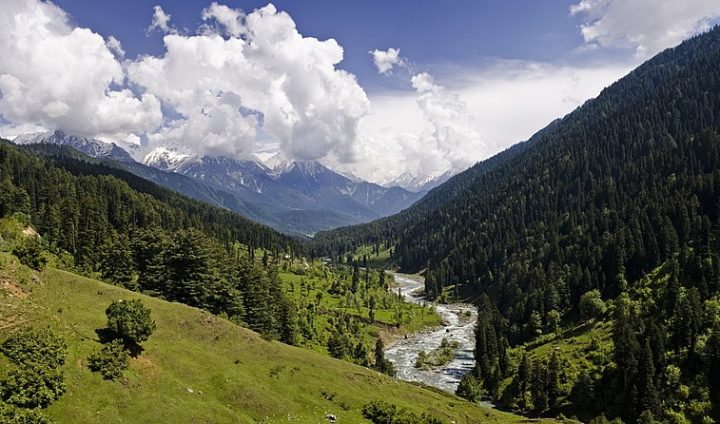In the Hajin area of Indian-administered Kashmir’s Bandipora district, a Kashmiri wildlife official used a firecracker to scare off a pack of wild boars approaching a prosperous paddy plantation on a bright afternoon this month. During the commotion, a boar separated from the group and broke through a makeshift fence surrounding a vegetable garden where Sharifa Begum, a 48-year-old farmer’s wife, was tending to her bean and potato beds. Fear-stricken and unfamiliar with wild boars, Begum was petrified by the sight of the furious, black-furred creature. Before she could find safety, the boar collided with her abdomen, causing her to fall to the ground before vanishing into the dense bushes nearby.
Historically, the Indian wild boar was introduced to the Himalayan region of Kashmir by Maharaja Gulab Singh, a military general in the former Sikh empire who acquired the area through the Treaty of Amritsar in 1846. Wild boar meat was considered a delicacy for the Dogras and Sikhs during that time. However, with the end of Dogra rule in 1947 and the division of Kashmir between India and Pakistan, the wild boar population began to decline. Muslims, the majority in Kashmir, are forbidden from consuming pork, and the sight of pigs is considered offensive to their religious beliefs. Furthermore, wild boars are seen as pests due to the damage they cause to crops, transmission of diseases to livestock, destruction of ground cover, and competition with native fauna.
For many years, no official sightings of wild boars were reported in the Kashmir valley after the Dogra rule. However, in 2013, wildlife scientists and researchers were puzzled by the reappearance of wild boars in Dachigam, a national park, after a 29-year absence. It was suggested that efforts should be made to eradicate or control the population. Subsequently, more sightings were documented, including encounters near the Line of Control with Pakistan-administered Kashmir, where the wild boar population has increased. Although an exact census of wild boars in Indian-administered Kashmir has not been conducted, their numbers are estimated to be in the hundreds, if not thousands.
Recently, wild boars have become a source of distress for the farmers in Hajin. These villagers rely on their fields and orchards for sustenance, and the boars have caused significant damage to paddy farms, vegetable gardens, and apple trees, posing a severe threat to their livelihoods. The farmers’ appeals to local officials have yielded no substantial action, as they are only authorised to chase away the animals rather than exterminate them. An amendment to India’s wildlife laws, which applies to Indian-administered Kashmir, has made it difficult for the local government to address the issue without federal approval. Additionally, the losses incurred in agriculture due to human-animal conflict are not calculated by the Indian government.
A study conducted by the Sher-e-Kashmir University of Agriculture Sciences revealed that the presence of wild boars has had a significant impact on vegetation and ground cover in riverine and woodland habitats of Dachigam National Park. The rooting behaviour of wild boars has led to a drastic reduction in herbaceous cover and even the local extinction of certain plant species. The study urged the government to minimise the negative effects of wild boars on agriculture and native ecosystems. The revival of wild boars in the Himalayan region, which has experienced rapid warming, is believed by experts to be connected to global warming. To understand this relationship better, a comprehensive study is required.
Meanwhile, in Hajin, Sharifa Begum, who survived the boar encounter, is reluctant to return to her vegetable garden due to lingering fear







